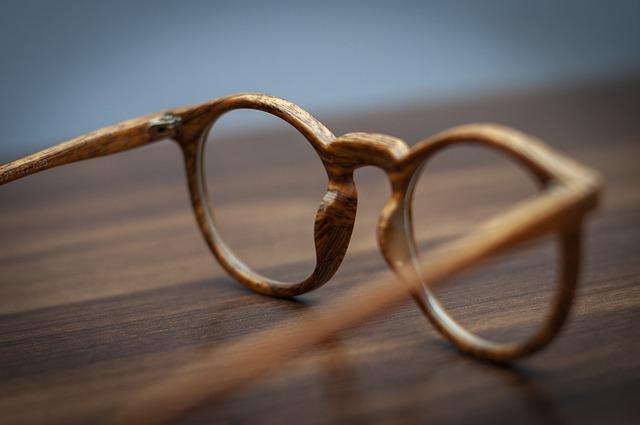In the realm of cinematic storytelling, where every frame is meticulously crafted to evoke emotion, the advent of high frame rate (HFR) filming emerges as a revolutionary force. As the flickering images on screen transform into fluid motion, audiences find themselves immersed in a visual symphony that challenges traditional perceptions. But how does this technical innovation reshape our viewing experience? From the sweeping vistas of epic landscapes to the intimate nuances of human expression, high frame rate filming offers a new lens through which to explore the art of cinema. This article delves into the intricacies of HFR, unraveling its impact on both filmmakers and viewers alike, and questioning whether this leap in technology enhances the magic of storytelling or disrupts its timeless charm.
Understanding Motion Clarity and Realism
High frame rate (HFR) filming significantly enhances the clarity of motion, providing a more lifelike viewing experience. Traditional frame rates, like 24 frames per second, can sometimes introduce motion blur, particularly in fast-paced scenes. However, HFR, often ranging from 48 to 120 frames per second, reduces this blur, making each moment appear sharper and more defined.
- Enhanced Detail: Every action sequence becomes more intricate, allowing viewers to catch subtle movements.
- Immersive Experience: The heightened realism draws audiences deeper into the narrative, almost blurring the line between film and reality.
- Smoother Transitions: The fluidity between frames eliminates jittery movements, offering a seamless visual flow.
While some purists argue that this level of realism can detract from the cinematic feel, others appreciate the vividness it brings to modern storytelling. Ultimately, the choice of frame rate can significantly influence how a story is perceived and experienced by its audience.

The Role of Frame Rate in Cinematic Storytelling
In cinematic storytelling, frame rate plays a pivotal role in shaping the viewer’s perception and emotional engagement. Traditional films often utilize 24 frames per second (fps), creating a familiar and somewhat dreamlike experience that aligns with the classical filmic aesthetic. This frame rate is cherished for its ability to convey motion with a slight blur, evoking a sense of nostalgia and timelessness. However, the advent of higher frame rates, such as 48 fps or even 120 fps, offers filmmakers new avenues to explore.
- Realism: Higher frame rates capture movement with exceptional clarity, enhancing the sense of realism. This can be particularly effective in action sequences or immersive landscapes, where every detail is crucial.
- Immersion: By minimizing motion blur, high frame rates draw viewers deeper into the scene, creating an almost hyper-realistic experience that can blur the lines between the screen and reality.
- Artistic Expression: Filmmakers can utilize varying frame rates to serve different narrative purposes, offering a dynamic toolset for creative storytelling.

Balancing Technology with Viewer Comfort
As filmmakers embrace the cutting-edge potential of high frame rate (HFR) technology, they face the challenge of maintaining viewer comfort. While HFR can enhance the clarity and fluidity of motion, it can also create an overly realistic viewing experience that some audiences find jarring. Balancing these elements requires a nuanced approach, considering both the narrative intent and audience expectations. Filmmakers must ask themselves: How does the added detail serve the story? Will it enhance or distract?
To achieve this balance, directors and cinematographers might consider:
- Genre Suitability: Determine if the film’s genre benefits from the hyper-realism of HFR. Action and nature documentaries might thrive, while dramas could suffer.
- Audience Preferences: Assess whether the target audience is likely to appreciate or reject the heightened realism.
- Strategic Application: Use HFR selectively for certain scenes to emphasize particular moments, rather than throughout the entire film.
By thoughtfully integrating HFR, filmmakers can craft a viewing experience that is both technologically advanced and emotionally engaging, ensuring that innovation enhances rather than overwhelms the storytelling.

Recommendations for Optimal Frame Rate Settings
When setting your frame rate for filming, it’s crucial to balance the desired aesthetic with the practicalities of playback. Higher frame rates, such as 60 fps or even 120 fps, offer smoother motion, making them ideal for fast-paced action sequences or sports. However, they can also make films appear hyper-realistic, which might not suit every narrative style. Conversely, 24 fps, the traditional cinematic standard, provides a more classic, film-like quality but may struggle with capturing rapid movements.
- Consider the Genre: Action and sports benefit from higher frame rates, while dramas and comedies might retain a more traditional look.
- Platform Matters: Streaming services often support various frame rates, but ensure your audience’s devices can handle the chosen setting.
- Experimentation: Don’t hesitate to test different settings to find what complements your visual storytelling.
Ultimately, the key is to align your frame rate with your creative vision while keeping in mind the technical aspects of your distribution platform.

